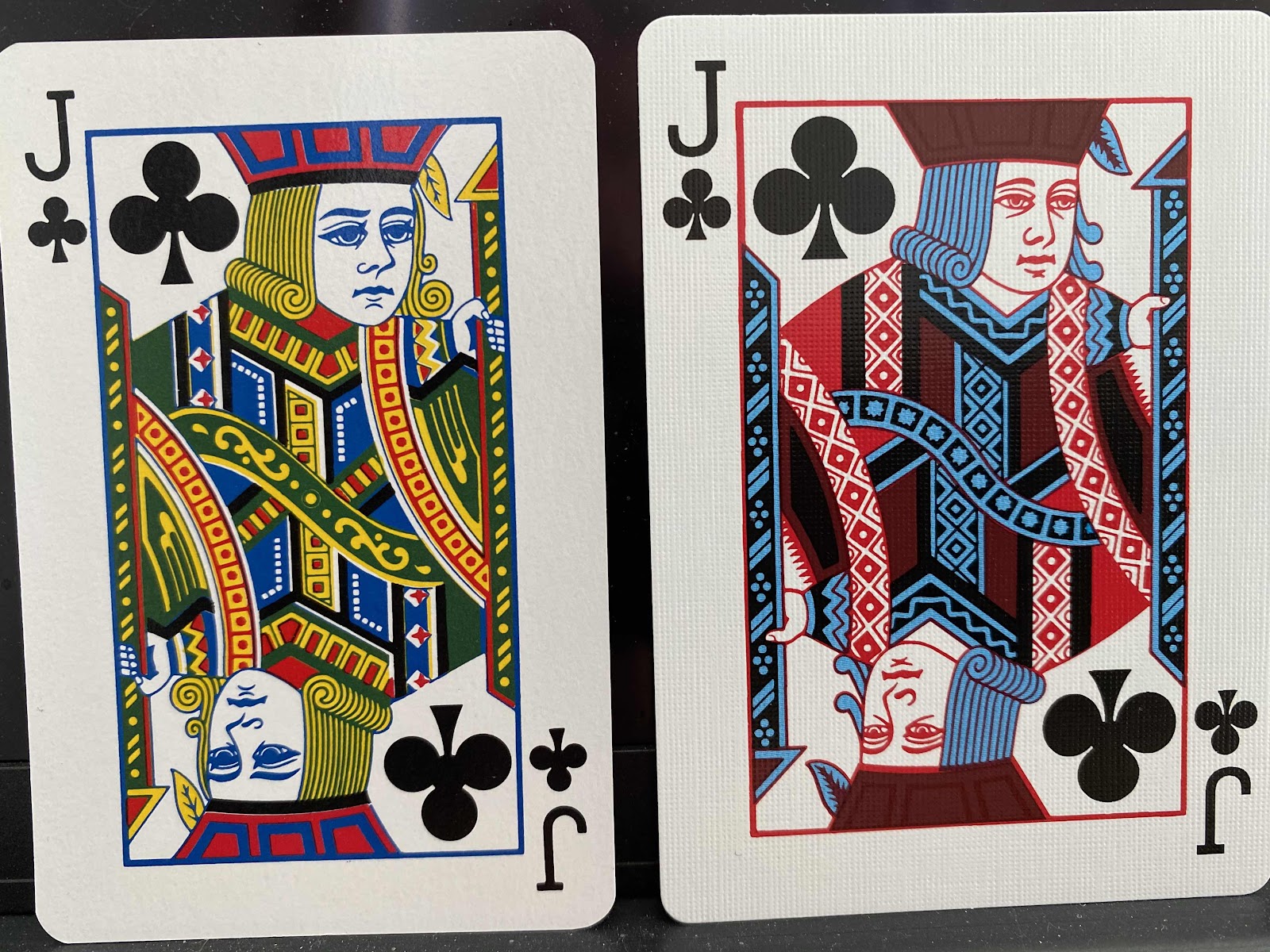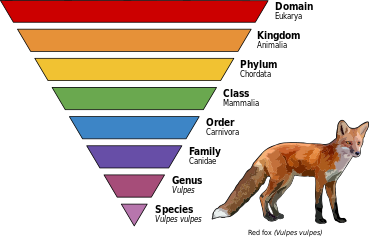I have an array of Bicycle and other American royal cards in front of me and I have many questions. If someone has already written all this up, I'd appreciate the referral. If not, here's some questions. I'll focus on jacks in this post but I have questions about the queens and kings too.
My biggest question is when was this type of clothing actually worn by the court? I've heard it was in the fifteen hundreds. Anyone?
Jacks - Here's six jacks to look at...

Clubs - The jack of clubs is holding a long vertical rod-like thing with a sort of arrow head on one side (the top?) and a point on the other side. It might be a stylized spear although the point on the back of it doesn't quite make sense. Anyone know anything about it?
The. jack of clubs also has a leaf hanging from the hat or crown of the JoC (ie the jack of clubs). Again, anyone know anything? The other jacks, JoS, JoD, and JoH (ie the jacks of Spades, Diamonds, and Hearts) have NO leaves hanging from their hats. Anyone know why?
Hearts. He has a mustache (JoC is clean shaven) and is holding something in his hand, maybe a leaf? There is the axe behind him. Yes, the JoS also has a mustache.
The Jack of Spades is holding a type of stick that has a sort of spiral to it. It has three sections in the spiral (ie it turns around one and a half times). What is it and what is it called? The JofS is the only one shown in profile. Some people when laying poker can declare “One eyed jacks are wild.” (Note jacks shown in profile = one eyed jacks).
Diamonds. The JoD is holding a rod which looks very similar to the JoC rod but with the point at both ends (not the arrowhead). It has a curved thing coming off it which could either be the hand protector if it's a sword or, in some versions, suggests a crossbow. Anyone know anything about it?
There are in most decks two jacks who are The One Eyed Jacks. See them? Yes, it's the jacks of spades and hearts. In some games, they are declared wild.
Editors note July 2024. This is a top viewed article which is funny because this article is more about sharing my questions than sharing my insights. Want my insights on card history? Check out my article about The Invention of The Joker one in the USA in the 1860s)
Queens -A quick look....

These queens, in all four suits, are each holding a flower. The QofS also has some sort of stick. What is that stick? A scepter or a religious symbol. The top row right one has a sort of cross on the top. Actually, it's two circles under a pointed diamond so there are other possibly symbolic interpretations. In the one on the left left, she has a musical staff as a decoration that might be part of her clothes, might be a shield. The QofS are holding something with six symbols visible, a seventh potentially hidden by her hand. The symbol might be of a plant, perhaps a grass or grain.
--
The kings had a fixed identity in both French and British decks since the 1500s: Charlemagne (hearts), David (spades), Caesar (diamonds), and Alexander (clubs). The queens and jacks, not so much.
One of the keys is usually holding a sword which looks like it goes thru his head. It can be called “ The Suicide King” and declared wild.
The card numbers have an array of symbols associated with them:
An Ace stands for Desire
Two stands for Union
Three is for Faith
Four is for Satisfaction
Five symbolizes a Change
Six is for Adjustments
Seven is an epitome of Victory
Eight stands for Power
Nine represents New beginnings
Ten symbolizes Success
Source: https://www.adda52.com/blog/card-suits-and-symbolism A more indepth explanation is available at: https://www.metasymbology.com/symbols.html
 |
| Traditional Representation of the Suits of Cards |
The Suits. Modern American suits are a descendent of the French four suits which can be traced to several concepts. The diamonds come from pentacles, the clubs use to look more like actual clubs for hitting, the hearts were previously cups, and spades descended from swords. Some historians believe the suits represent the four classes of Medieval society:
- Clubs: Batons, representing peasants and achievement through work
- Diamonds: Coins, representing merchants and the excitement of wealth creation
- Hearts: Cups or chalices, representing the clergy and the struggle to achieve inner joy
- Spades:: Swords, representing the nobility or military and the fractious problems of life
Modern Spanish decks have suits that look like the traditional ones shown above. Historically and geographically, there are many variations on suits. Germans used to have acorns, leaves, hearts, and bells. And some designers even had five and six suited decks.
Can anyone point me towards a good write up about the symbolism on the modern face cards?
I emailed in March 2023 Ken Lodge who is a great authority on the history of cards. He answered:
The attributes of the court cards have little or no significance beyond showing them to be kings, queens and soldiers. A lot of them have been reinterpreted or misinterpreted over the centuries, so, for example, the leaf on the JC was originally a feather in his cap. Similarly, the odd object held by the JS is a weird interpretation of what was a pike head. If you look at older cards, you can see the way in which poor wood-cutting ability obscured some of the objects on the cards, so that when they were redesigned, mostly in the 19th century, they were not recognized correctly. The object held by the JS is meaningless - it isn’t an object. The leaf held by the JH was originally the head of a staff.
If you look at my blog and the plainbacks website, you’ll see lots of examples of earlier cards, which may answer some of your questions.
I also looked at a Ken Lodge article on WOPC which traces Dougherty's designs for face cards from the mid 1800s to the end of the century. Why care about Dougherty (and I quote): Andrew Dougherty was one of the biggest American card-makers in the 19th century, if not the biggest. After a relatively early start in a small way in 1848, at which time he produced packs of rather poor quality in terms of the cardboard he used, but which had very unusual courts, he invented and developed new methods of production and his business expanded hugely, so that in the 1870s he was producing three and a half million packs a year.
I notice that at the bottom of that article, he shows the face cards from two Dougherty decks at the end of the 1800s. I notice that on both of them (and for the first time), the jack of clubs has the leaf sticking out of his head. hmmmm.
Other historical articles on this site?























































